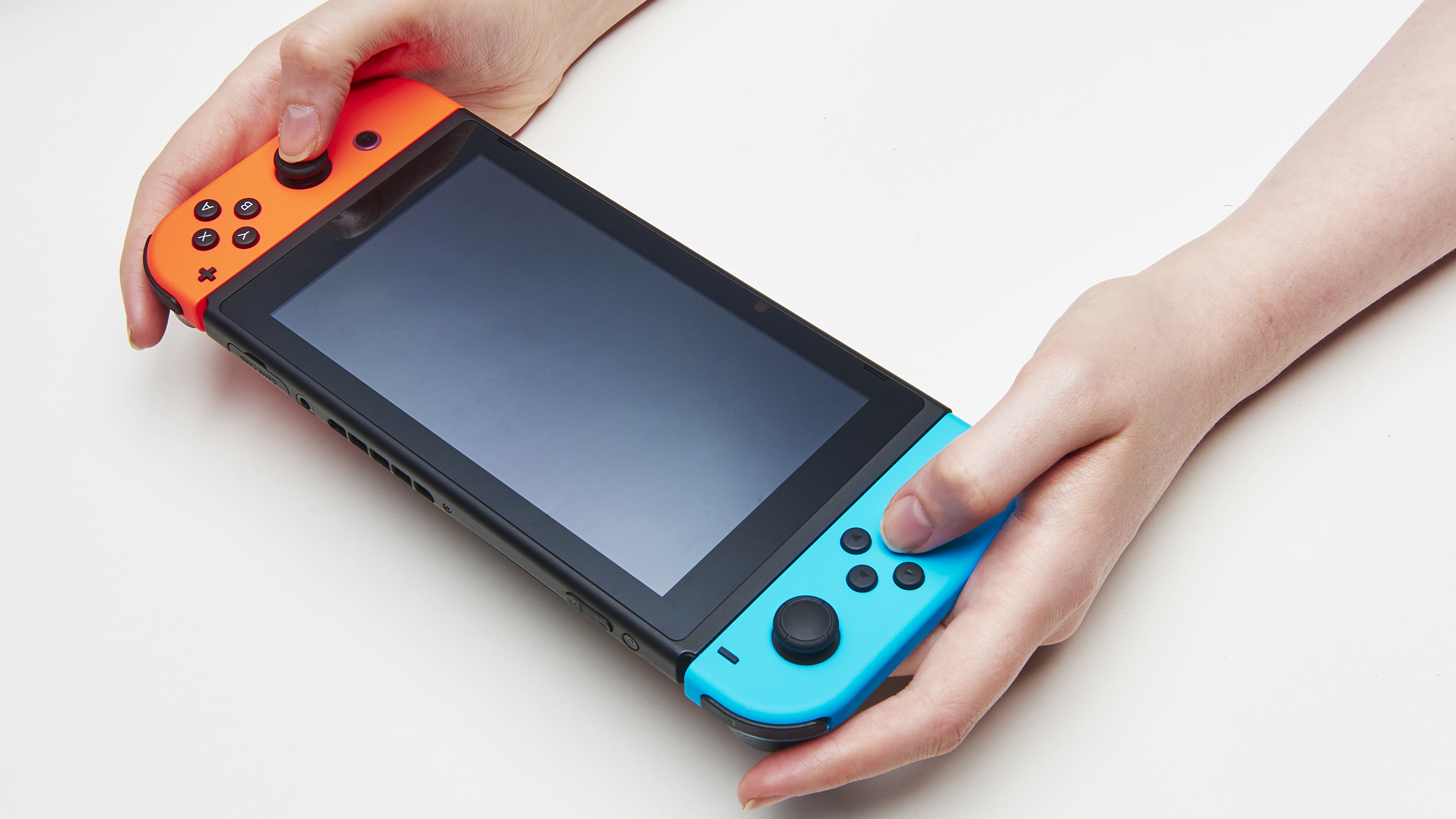Nintendo Switch then vs now, how a year can change a console - and a company's - fate
As the Switch blows out a single candle on its birthday cake, it’s important to appreciate just how successful Ninty’s hybrid console has been
On the first anniversary of the Nintendo Switch, it seems strange to look back at that first reveal video and remember the hubbub of confusion and excitement. Our first look at Ninty’s strange little hybrid pitched it as the coolest piece of kit to bring to a frat party, as something you’d play in the park, as something that would bring people together. I, along with hundreds of other gamers, scratched my head, wondering if the Japanese gaming giant had finally lost its mind by creating a hybrid console; a device that could potentially fall in the gap between console and handheld. However, the brilliance of Switch has burned brighter and brighter throughout the first year of its life, leaving me - and many others - in no doubt about its technical accomplishments or universal appeal.
With the Wii U it was clear Nintendo had lost its way. After the success of the Wii, the Wii U was a failure; a cumbersome, awkward and downright weird attempt at a hybrid that made sure gamers and third-party developers alike lost confidence in Nintendo’s ability to build a successful home console. The 3DS family was still flying of course, but the aging technology paled in comparison to the experiences gamers could find on PS4, Xbox One and heck, even smartphones. So even before Switch was announced, it was clear it had some work to do to change public and industry perception of what Nintendo could really do. And as soon as people started getting their hands on the strange little hybrid, it was clear that its attempt to bring together Nintendo’s home and portable gaming consoles had the potential to be a success.
And oh boy, has the Switch been a success. By the 10 month mark, Nintendo announced the Switch had outsold the Wii U’s lifetime sales, with over 14 million consoles sold, and counting. Over the five years of the Wii U’s lifespan, Nintendo only managed to shift 13 million consoles. Neither console can compare to the 71 million 3DS sales or the staggering 101 million Wii sales, but the Switch’s success means Nintendo is now as profitable as it was in the height of the Wii’s success back in 2009, highlighting just how turbulent the past nine years have been for the company financially.

Figures are one thing, but it's really about the games
But of course, success doesn’t lie in sales figures alone. The Switch’s popularity explosion has also come from the fact Nintendo has been courting developers left, right and centre, making sure that the mistakes it made with the Wii U, and in part learning from Sony’s PS Vita too, wouldn’t be repeated with Switch. Just look at the shelves of the Switch’s eShop that are bowing under the weight of the Nindies - that’s Nintendo Indies to the uninitiated - with more and more being added to the list of upcoming Switch games nearly every day. It’s something that the Wii U seriously struggled with, and to a point all the more modern Nintendo consoles have suffered from. You don’t see many independently-made games popping up on the 3DS for example.
And that lack of diversity was a bigger problem for the Wii U when it came to third-party developers. The likes of Activision and EA originally supported the odd console, but thanks to it being a particularly troublesome platform to develop for, and the sales figures being average at best, Nintendo quickly became the only one developing for its own console. That’s certainly not the case for the Switch though, with third party developers returning to the warm embrace of Nintendo in their droves. Ubisoft kicked things off with a Switch exclusive in the form of Mario + Rabbids: Kingdom Battle, the XCOM-style strategy game that blends Nintendo’s own celebrated mascots with the Rabbids for an adventure that turns out to be the thing nobody knew they wanted until they experienced its brilliance.

Other big AAA developers quickly followed suit, with Bethesda and even Rockstar Games itself deciding that the Switch is more than worth a punt, with the likes of Skyrim, L.A. Noire and DOOM already available on Ninty’s latest console, and all very much worth playing (again) in portable form. Seeing that kind of support isn’t only a massive boon for Nintendo, but it also solidifies the Switch in the industry as a proper games console. While the Wii could be seen as a little gimmicky, and aimed mainly at the family space, and the Wii U was aimed squarely at no-one at all, the Switch is already establishing itself as a viable alternative to the PS4 or Xbox One.
Zelda breathing the wild appeal back into Nintendo
That’s especially true when you look at Nintendo’s re-energised offering of first party games. Some may have questioned the choice of launching the Switch with just Legend of Zelda: Breath of the Wild at the helm and Super Mario Odyssey a then distant dream, but regardless of the original doubts, Nintendo proved that it takes just one game to launch a console. After that, it was just a case of letting everything else - from indie support to big AAA releases from other big names in games - fall steadily into place. The games and features available on the Switch feel like the culmination of everything you’ve ever loved about Nintendo. Motion controls; silly party games; deep, unique, story-led experiences; excellent game design; and everything else in between, are all available on the Switch. Now, we’re looking at a Nintendo that’s in the best place, financially and critically, that it has been in decades.
Weekly digests, tales from the communities you love, and more

That’s not to say that the Switch is without its flaws, after all, nothing is perfect. The Switch still doesn’t support cloud saves, so if you lose or break it you also lose the hundreds of hours you’ve put into your games. The online service launching later this year is still surrounded by a fug of mystery and the app functionality making online play more complicated than any other gaming platform to date. And there’s still no sign of Virtual Console, or even support for streaming services like Netflix.
But the future is bright for Nintendo’s dinky little hybrid. The Switch has gone from a console with just Breath of the Wild to its name, to a console about to debut how, with Nintendo Labo, cardboard can change the way you game - and learn - in just over 12 months. What’s next for Switch is something that none of us can predict, but if the first year of its life is anything to go by, it’s going to be an exciting journey.
Looking to buy a Switch? Here are the best deals on new Nintendo Switch bundles and here are some great prices on a new Nintendo Switch controller

Sam Loveridge is the Brand Director and former Global Editor-in-Chief of GamesRadar. She joined the team in August 2017. Sam came to GamesRadar after working at TrustedReviews, Digital Spy, and Fandom, following the completion of an MA in Journalism. In her time, she's also had appearances on The Guardian, BBC, and more. Her experience has seen her cover console and PC games, along with gaming hardware, for a decade, and for GamesRadar, she's in charge of the site's overall direction, managing the team, and making sure it's the best it can be. Her gaming passions lie with weird simulation games, big open-world RPGs, and beautifully crafted indies. She plays across all platforms, and specializes in titles like Pokemon, Assassin's Creed, The Sims, and more. Basically, she loves all games that aren't sports or fighting titles! In her spare time, Sam likes to live like Stardew Valley by cooking and baking, growing vegetables, and enjoying life in the countryside.


